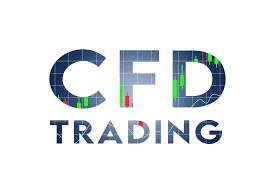
The Best CFD Trading Markets: A Comprehensive Guide for Traders
Contract for Difference (CFD) trading has gained immense popularity in recent years among traders seeking flexible and diverse investment opportunities. If you’re looking to dive into the dynamic world of CFD trading, understanding the best CFD trading markets is crucial for your success. In this article, we will discuss the leading CFD trading markets of 2023, including stocks, currencies, commodities, and cryptocurrencies. Additionally, we will explore strategies to help you navigate these markets effectively. For those interested in finding reliable brokers, you can check out best cfd trading markets https://bestbrokercfd.com/cfd-brokers/.
1. The Stock Markets
CFD trading in stocks allows traders to speculate on multinational corporations ranging from technology giants to established blue-chip companies. In 2023, stock CFDs remain a lucrative option due to their liquidity and volatility. With the potential for significant price swings, traders can leverage their investments to maximize returns.
Some of the best stock CFDs to consider include:
- Apple Inc. (AAPL) – A leader in technology with a strong global brand presence.
- Amazon.com Inc. (AMZN) – A dominant player in e-commerce and cloud computing.
- Tesla Inc. (TSLA) – A pioneer in electric vehicles with high market volatility.
The key to successful stock trading lies in thorough market analysis, including understanding company fundamentals and monitoring industry trends.
2. Currency Trading (Forex)

The Forex market is one of the largest, with a daily trading volume exceeding $6 trillion. CFD trading on currency pairs enables traders to speculate on the price movements of major and minor currencies. Popular currency pairs include:
- EUR/USD – The most traded currency pair globally.
- GBP/USD – Known for its volatility and wide-ranging market movements.
- USD/JPY – Offers good liquidity and tight spreads.
Successful Forex trading requires a solid understanding of economic indicators, geopolitical events, and technical analysis. Utilizing leverage can amplify your results but also increases the risk involved.
3. Commodity Markets
Commodity CFD trading allows investors to speculate on the prices of raw materials such as gold, oil, and agricultural products. The commodity market reacts to supply-demand fluctuations, geopolitical tensions, and economic downturns, making it a diverse trading field. Notable commodities for CFD trading include:
- Gold – A safe-haven asset that typically retains value in economic uncertainty.
- Crude Oil – Highly sensitive to geopolitical events and OPEC policy changes.
- Corn – An agricultural commodity influenced by weather conditions and crop yield forecasts.
Traders should keep an eye on reports and news that can impact commodity prices, such as weather forecasts, geopolitical tensions, and macroeconomic indicators.
4. Cryptocurrency Trading
Cryptocurrencies have surged in popularity over the past decade, and CFD trading in this area offers opportunities to capitalize on the high volatility of digital assets. Bitcoin, Ethereum, and Ripple are among the most traded cryptocurrencies. Some factors to consider when trading cryptocurrencies include:

- Market Sentiment – Cryptocurrency prices can fluctuate wildly based on news and investor sentiment.
- Regulatory Developments – Changes in regulation can significantly impact prices.
- Technological Advances – Innovations in blockchain technology can influence a cryptocurrency’s credibility and price.
Given the rapid pace of innovation and change in the cryptocurrency market, a robust risk management strategy is essential for successful trading.
5. Mixed Markets
Diverse market exposure can be achieved through trading CFDs across various asset classes, including stocks, commodities, and cryptocurrencies. This mixed approach allows traders to hedge risks and balance their portfolios. When considering a mixed trading strategy, it’s essential to:
- Assess correlation between different assets.
- Implement effective risk management strategies.
- Monitor market conditions across all asset classes.
Diversification can minimize risks and potentially enhance long-term profitability.
Conclusion
In 2023, aspiring traders have access to a broader range of CFD trading markets than ever before. From stocks and Forex to commodities and cryptocurrencies, each market presents unique opportunities and challenges. By honing your trading skills and developing a robust strategy tailored to the market you choose, you can take advantage of the dynamic nature of CFD trading. Remember to continuously educate yourself, stay updated on market trends, and choose a reputable broker to enhance your trading experience.
As you consider which CFD trading markets to engage with, ensure that your approach aligns with your financial goals and risk tolerance. Each market has unique characteristics that can offer significant rewards when approached thoughtfully.